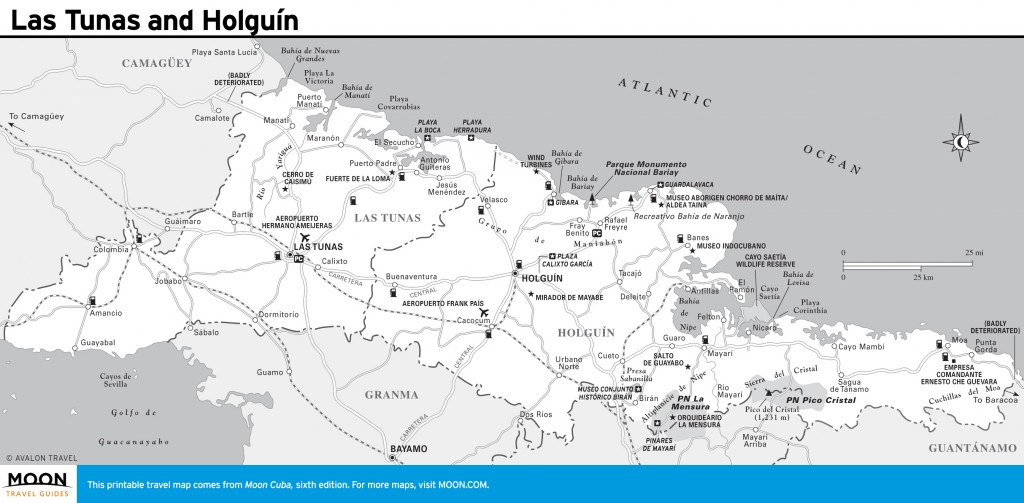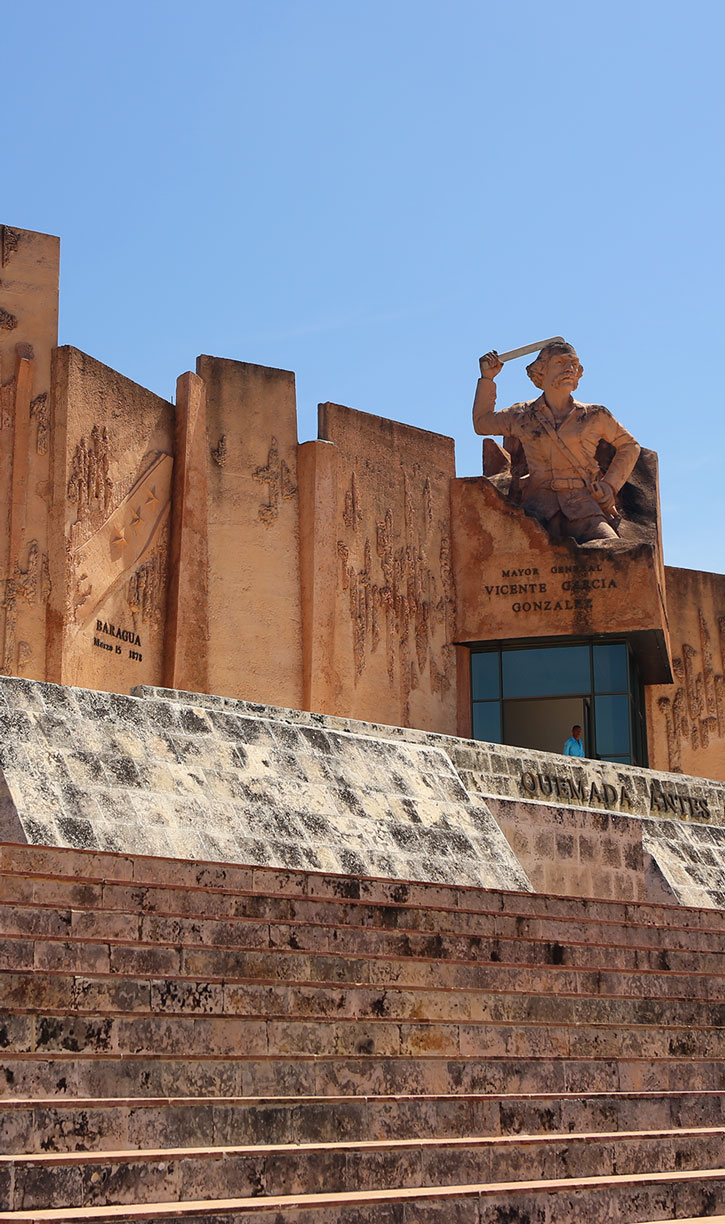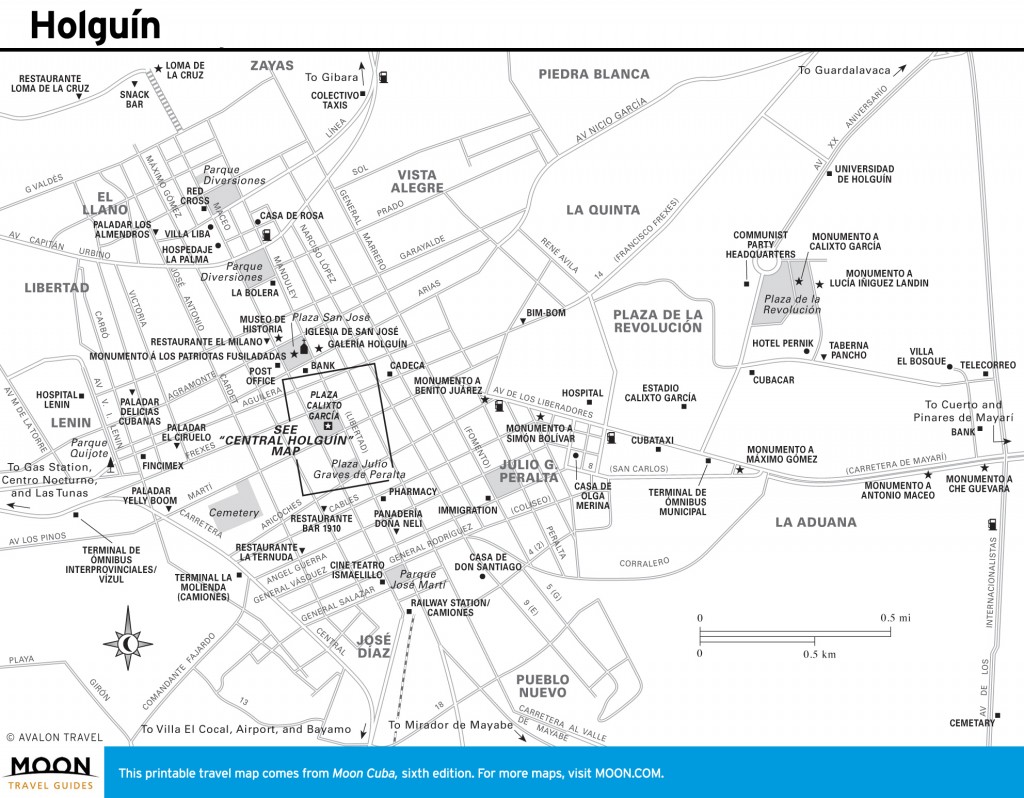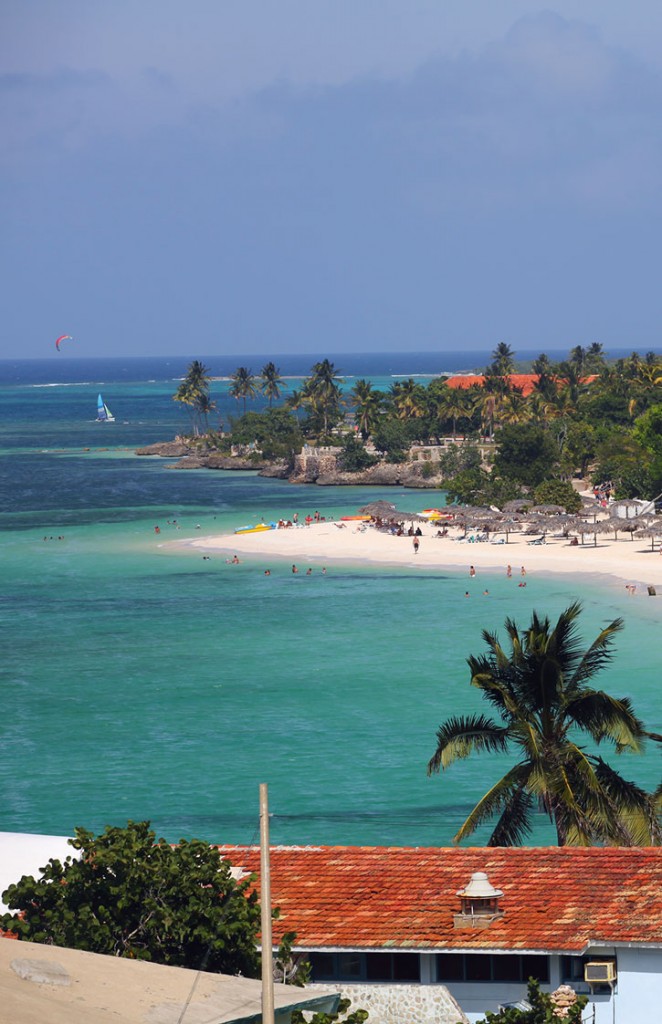
Las Tunas and Holguín
Rich in history and physically diverse, this region is as interesting as any in the nation. Holguín, rather than Las Tunas, steals the show. The scenery begins to grow more lush and interesting eastward.Las Tunas Province forms a flat, narrow band across the island, broadening to the northeast. The capital city occupies a low-lying ridge on the eastern edge of the great plains that dominate central Cuba. It is dull, unvarying terrain, mostly farmed for cattle. The scenery begins to grow more lush and interesting eastward. The province has few beaches, but Playa Herradura is a stunner popular with Cubans and as-yet-undiscovered by foreign visitors. There are few sites of interest other than in the eponymous provincial capital.
Monumento a Mayor General Vicente García González in Las Tunas’ Plaza de la Revolución. Photo © Christopher P. Baker.
Holguín, by contrast, is chock-full of things to see and do. The capital city itself boasts several colonial plazas and an active nightlife, and the hinterlands have several unique sites, foremost among them Fidel Castro’s birthplace. Holguín’s north-central shore is in the throes of touristic development, centered on Playas Guardalavaca and Pesquero. Inland, the dramatic formations of the Grupo de Maniabon will have you reaching for your camera, and there are pre-Columbian museums and archaeological sites to explore.
East of Holguín city, the coastal plain narrows down to a panhandle extending along the shore at the base of the Sierra de Nipe, Sierra del Cristal, Cuchillas del Toa, and Alturas de Moa. These mountains are nirvana to bird-watchers and hikers. The color of heated chrome, the mountains are also rich in cobalt, manganese, and nickel. The ores are processed at the coastal town of Moa, in the far east of Holguín Province; the immediate area is blighted by the mineral extraction industry.

Holguín
The city of Las Tunas is worth a quick browse in passing. All routes through the province pass through the capital. The larger city of Holguín offers considerably more to see, including three plazas. Holguín also has a well-developed cultural scene, with everything from an excellent Casa de la Cultura to a bargain-priced cabaret. I recommend a two-day stay.
The slightly down-at-heels seafront town of Gibara appeals for its marvelous setting, laid-back lifestyle, and bracing ocean airs. It has an excellent natural history museum. To its west, I love Playa Herradura—probably the nicest beach in Cuba for sharing a 100 percent Cuban experience.
The Parque Monumento Nacional Bariay, where Christopher Columbus supposedly first set foot on Cuban soil in 1492, is strongly touted for a half-day visit, with most participants buying into package excursions from the nearby beach resorts. Far more rewarding is the Museo Aborigen Chorro de Maíta, a pre-Columbian archaeological site, and the similarly focused Museo Indocubano, in Banes. And how about Museo Conjunto Histórico Birán, Fidel Castro’s birthplace and childhood home?

Guardalavaca has gorgeous beaches and excellent diving. Photo © Christopher P. Baker.
The beach resort of Guardalavaca and nearby Playa Pesquero are imbued with all-inclusive resorts plus plenty of options for trippers on day visits from Holguín, including scuba diving, a dolphin show, bird-watching, horseback riding, and kayaking. You can even take a ride into the Grupo de Maniabon in a 1920 Baldwin steam train.
Birders and hikers should head for Pinares de Mayarí, an alpine retreat in the Sierra de Nipe, where the Salto El Guayabo waterfall is not to be missed, or to Cayo Saetía, where the wildlife-viewing is surreal (think camels and zebra).
The Carretera Central cuts through the center of the provinces. At Holguín, it turns southwest for Bayamo, in Granma Province. If heading from Camagüey direct to Granma Province and Santiago, you can bypass Holguín via a paved road that leads southeast from Las Tunas to Bayamo and cuts across the Río Cauto plains via the town of Jobabo.
The Circuito Norte (north coast road) is disjointed and diverts you inland through the cities of Las Tunas and Holguín. Roads radiate to Puerto Padre, Gibara, Guardalavaca, and Banes. West of Manatí and east of Moa, much of the Circuito Norte is badly deteriorated.
Excerpted from the Sixth Edition of Moon Cuba.